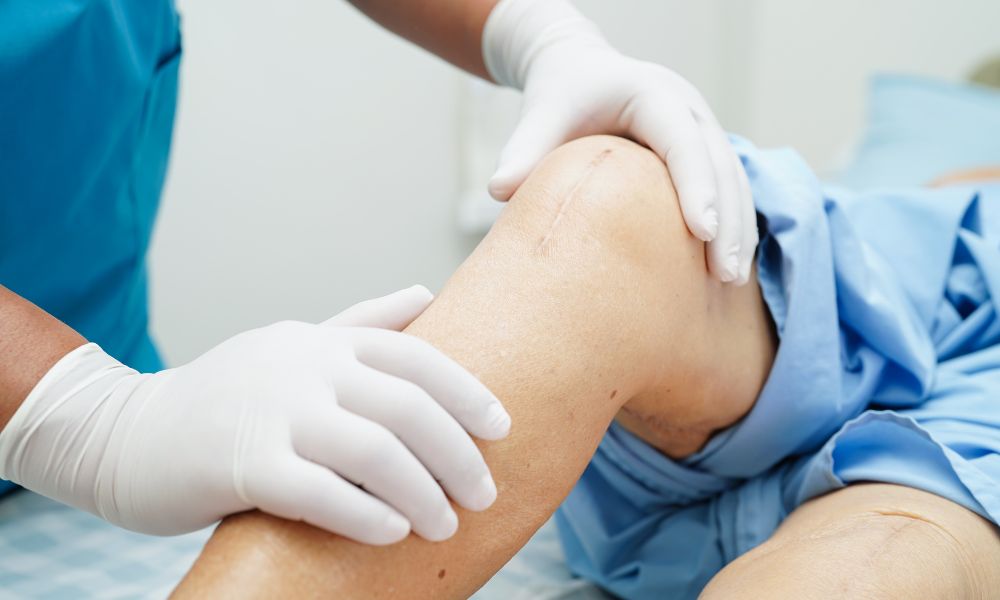Knee Replacement Surgery in Nagpur: let's understand

Knee replacement surgery, also known as knee arthroplasty, involves the replacement of either a portion or the entirety of the knee joint. The surgeon will substitute the damaged cartilage and bone with an artificial joint during this procedure. The recovery period following a knee replacement can extend up to one year; however, patients may gradually return to some of their regular activities as they progress in their healing process.
What conditions are treated with a knee replacement?
A healthcare professional may recommend knee replacement surgery if you are experiencing severe symptoms that persist despite receiving nonsurgical interventions. These symptoms include joint pain, stiffness, limited mobility (difficulty moving the knee), and swelling.
Arthritis is the predominant condition leading individuals to require knee replacement surgery. The majority of patients opting for this procedure have osteoarthritis; however, individuals with rheumatoid arthritis may also find themselves in need of surgery.
Although uncommon, a healthcare provider might propose knee replacement if you have sustained a bone fracture in your knee that results in post-traumatic arthritis following an injury.
- Car accident.
- Fall.
- Sports injury.
How common is knee replacement surgery?
Knee replacements represent one of the most prevalent forms of arthroplasty. In the United States, surgeons conduct over 850,000 knee replacement procedures annually.
What is the typical recovery duration following a knee replacement?
Complete recovery from a knee replacement generally requires approximately one year. However, most individuals can return to the majority of their regular activities within six weeks post-surgery.
The duration of your recovery will be influenced by various factors, including your:
- Activity level before surgery.
- Age.
- Other health conditions.
Your surgeon will give you a customized recovery plan, but in general, you should:
- Apply ice to your knee: Icing your knee several times daily for 20 minutes each session can assist in alleviating pain and reducing swelling.
- Elevate your knee: It is advisable to keep your knee elevated above heart level whenever possible. You may use cushions or pillows for support while lying down, or rest it on a footstool when seated.
- Maintain cleanliness and coverage of your incision: Adhere strictly to your surgeon’s guidelines regarding incision care. Inquire about the appropriate times to change the dressing on your incision and when it is permissible to shower or bathe.
- Engage in home exercises: Your surgeon will provide you with exercises to commence shortly after your surgery. They will demonstrate the proper techniques for movements and exercises aimed at strengthening the muscles surrounding your knee and preventing stiffness. It is essential to perform these exercises as frequently as directed by your surgeon, as they will facilitate your recovery and ensure the restoration of your joint’s functionality.
- Participate in physical therapy: You will collaborate with a physical therapist for several months following your surgery. They will assist you in safely initiating movement, including bending your knee and walking.
Pain management after knee replacement
Following surgery, it is common to experience pain, particularly during the initial weeks of your recovery. This discomfort may arise from the surgical procedure itself as well as from the healing process of your body.
Your surgeon will recommend a regimen that may include a combination of prescription pain relievers, over-the-counter nonsteroidal anti-inflammatory drugs (NSAIDs), provided they are safe for you, and acetaminophen to help manage your pain. Specific dosages and frequency for each type of medication will be communicated by your surgeon.
Should you find that your pain is excessive or if you have concerns regarding potential complications from the pain medication, it is important to consult with your surgeon.
When is it safe to return to work or school after a knee replacement?
The duration of time you will need to be absent from work or school is contingent upon the level of stress your occupation or other activities impose on your knee. Generally, individuals require a period of rest at home for several weeks following a knee replacement procedure. Your surgeon will provide guidance on when it is appropriate for you to resume work or school activities.
What can I do to support my recovery after a knee replacement?
You will be able to use a cane or walker within a few days following your surgery. However, assistance may be required for certain daily tasks, such as:
- Bathing
- Cleaning
- Laundry
- Cooking
- Shopping
It is advisable to arrange for a family member or friend to assist you during your recovery period. Your surgeon or healthcare provider can recommend additional resources if you require further support.
- To facilitate a smoother and safer recovery, it is important to prepare your living space in advance, which may include:
- Acquiring a bench or chair for your shower
- Installing grab bars or obtaining a commode chair to aid in using the toilet
- Eliminating potential tripping hazards, such as power cords, rugs, and loose carpets